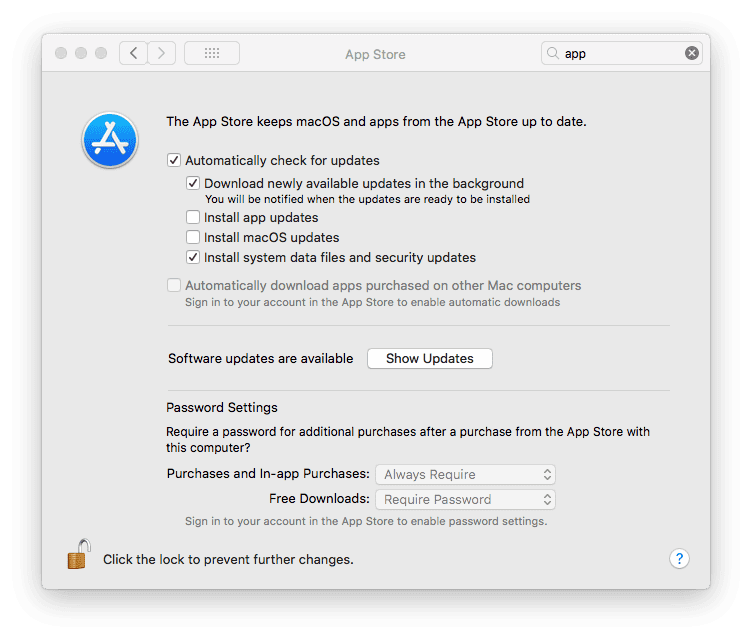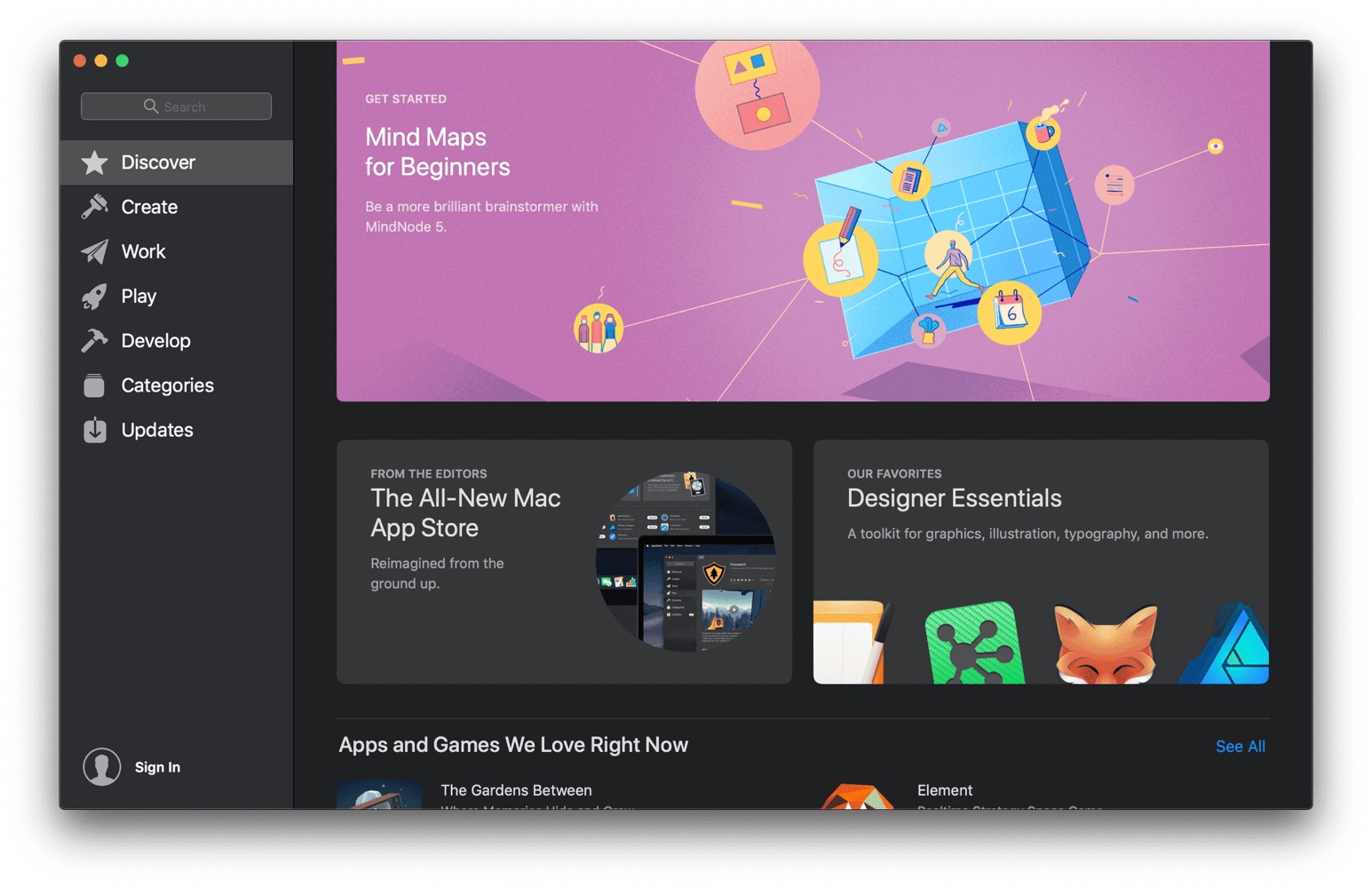Macos Uses Which App To Store Passwords For Applications
- Distributing a Mac App Store App. Log in to Jamf Pro. Click Computers at the top of the page. Click Mac App Store Apps. Do one of the following: To add the app by browsing the App Store, enter the name of the app, choose an App Store country, and click Next.
- Scheduling Automatic App Updates. Log in to Jamf Pro. Click Computers at the top of the page. Click Mac App Store Apps. Click the app for which you want to enable automatic app updates. Select Automatically update app. To select a country or region to use for syncing apps with iTunes, choose an option from the iTunes Country or Region pop-up menu.
- Jun 08, 2020 But, it also has an extension for Safari, so you can use the default browser and quickly access passwords from the app sharing tool. Enpass has a desktop app and uses your preferred cloud storage (iCloud, Dropbox, Google Drive, OneDrive, ownCloud, WebDAV, or Box) to sync across devices. Information is stored locally on your device or cloud storage.
- Nov 08, 2017 Passwords aren’t all that’s stored in Keychain Access: your system uses this space to store a few other security-related items. Here’s a quick rundown. Certificates are used by Safari and other programs to verify that sites and applications are genuine.
- Apr 07, 2017 Apps from the Mac App Store: Applications you install from the Mac App Store are considered the most trustworthy, as they’ve gone through an Apple vetting process and are hosted by Apple themselves. They’re also sandboxed, although this is a reason why many app developers don’t use the Mac App Store.
- New privacy information on the App Store 7 lets you see a summary of the privacy practices of each app before you decide to download it — just like nutrition labels help you understand what’s in food before you buy it. Developers self-report how they use your data, including what data they collect and whether that data is used to track you.
Time Machine is a backup software application distributed as part of macOS, desktop operating system developed by Apple.The software is designed to work with AirPort Time Capsule, the Wi-Fi router with built-in hard disk, as well as other internal and external disk drives.It was introduced in Mac OS X Leopard.
This is a requirement, as you need access to the Mac App Store to download OS X and create the installation drive. How to download ichat for mac.
This article lists and describes the different compliance settings you can configure on macOS devices in Intune. As part of your mobile device management (MDM) solution, use these settings to set a minimum or maximum OS version, set passwords to expire, and more.
This feature applies to:
- macOS
As an Intune administrator, use these compliance settings to help protect your organizational resources. To learn more about compliance policies, and what they do, see get started with device compliance.
Before you begin
Create a compliance policy. For Platform, select macOS.
Device Health
- Require a system integrity protection
- Not configured (default) - This setting isn't evaluated for compliance or non-compliance.
- Require - Require macOS devices to have System Integrity Protection (opens Apple's web site) enabled.
Device Properties
Minimum OS required
When a device doesn't meet the minimum OS version requirement, it's reported as non-compliant. A link with information on how to upgrade is shown. The device user can choose to upgrade their device. After that, they can access organization resources.Maximum OS version allowed
When a device uses an OS version later than the version in the rule, access to organization resources is blocked. The device user is asked to contact their IT administrator. The device can't access organization resources until a rule changes to allow the OS version.Minimum OS build version
When Apple publishes security updates, the build number is typically updated, not the OS version. Use this feature to enter a minimum allowed build number on the device.Maximum OS build version
When Apple publishes security updates, the build number is typically updated, not the OS version. Use this feature to enter a maximum allowed build number on the device.
System security settings
Password
Require a password to unlock mobile devices
- Not configured (default)
- Require Users must enter a password before they can access their device.
Simple passwords
- Not configured (default) - Users can create passwords simple like 1234 or 1111.
- Block - Users can't create simple passwords, such as 1234 or 1111.
Minimum password length
Enter the minimum number of digits or characters that the password must have.Password type
Choose if a password should have only Numeric characters, or if there should be a mix of numbers and other characters (Alphanumeric).Number of non-alphanumeric characters in password
Enter the minimum number of special characters, such as&,#,%,!, and so on, that must be in the password.Setting a higher number requires the user to create a password that is more complex.
Maximum minutes of inactivity before password is required
Enter the idle time before the user must reenter their password.Password expiration (days)
Select the number of days before the password expires, and they must create a new one.Number of previous passwords to prevent reuse
Enter the number of previously used passwords that can't be used.
Important
Paragon ntfs 2019 for mac 破解 catalina. When the password requirement is changed on a macOS device, it doesn't take effect until the next time the user changes their password. For example, if you set the password length restriction to eight digits, and the macOS device currently has a six digits password, then the device remains compliant until the next time the user updates their password on the device.
Encryption
- Encryption of data storage on a device
- Not configured (default)
- Require - Use Require to encrypt data storage on your devices.
Device Security
Firewall protects devices from unauthorized network access. You can use Firewall to control connections on a per-application basis.
Firewall
- Not configured (default) - This setting leaves the firewall turned off, and network traffic is allowed (not blocked).
- Enable - Use Enable to help protect devices from unauthorized access. Enabling this feature allows you to handle incoming internet connections, and use stealth mode.
Incoming connections
- Not configured (default) - Allows incoming connections and sharing services.
- Block - Block all incoming network connections except the connections required for basic internet services, such as DHCP, Bonjour, and IPSec. This setting also blocks all sharing services, including screen sharing, remote access, iTunes music sharing, and more.
Stealth Mode
- Not configured (default) - This setting leaves stealth mode turned off.
- Enable - Turn on stealth mode to prevent devices from responding to probing requests, which can be made my malicious users. When enabled, the device continues to answer incoming requests for authorized apps.
Gatekeeper
For more information, see Gatekeeper on macOS (opens Apple's web site).
Android App To Store Passwords


Allow apps downloaded from these locations
Allows supported applications to be installed on your devices from different locations. Your location options:- Not configured (default) - The gatekeeper option has no impact on compliance or non-compliance.
- Mac App Store - Only install apps for the Mac app store. Apps can't be installed from third parties nor identified developers. If a user selects Gatekeeper to install apps outside the Mac App Store, then the device is considered not compliant.
- Mac App Store and identified developers - Install apps for the Mac app store and from identified developers. macOS checks the identity of developers, and does some other checks to verify app integrity. If a user selects Gatekeeper to install apps outside these options, then the device is considered not compliant.
- Anywhere - Apps can be installed from anywhere, and by any developer. This option is the least secure.
Next steps
Macos Uses Which App To Store Passwords For Applications Windows 10
- Add actions for noncompliant devices and use scope tags to filter policies.
- Monitor your compliance policies.
- See the compliance policy settings for iOS devices.